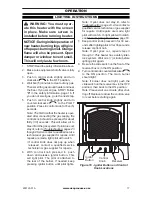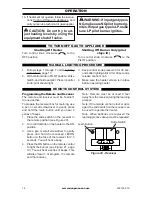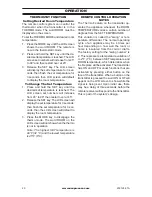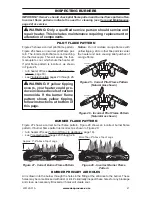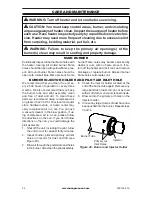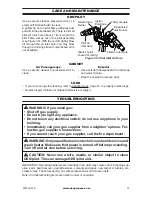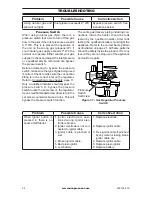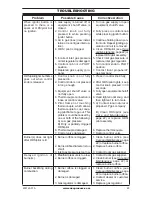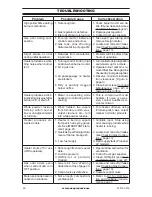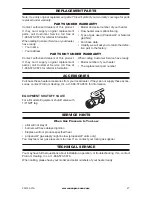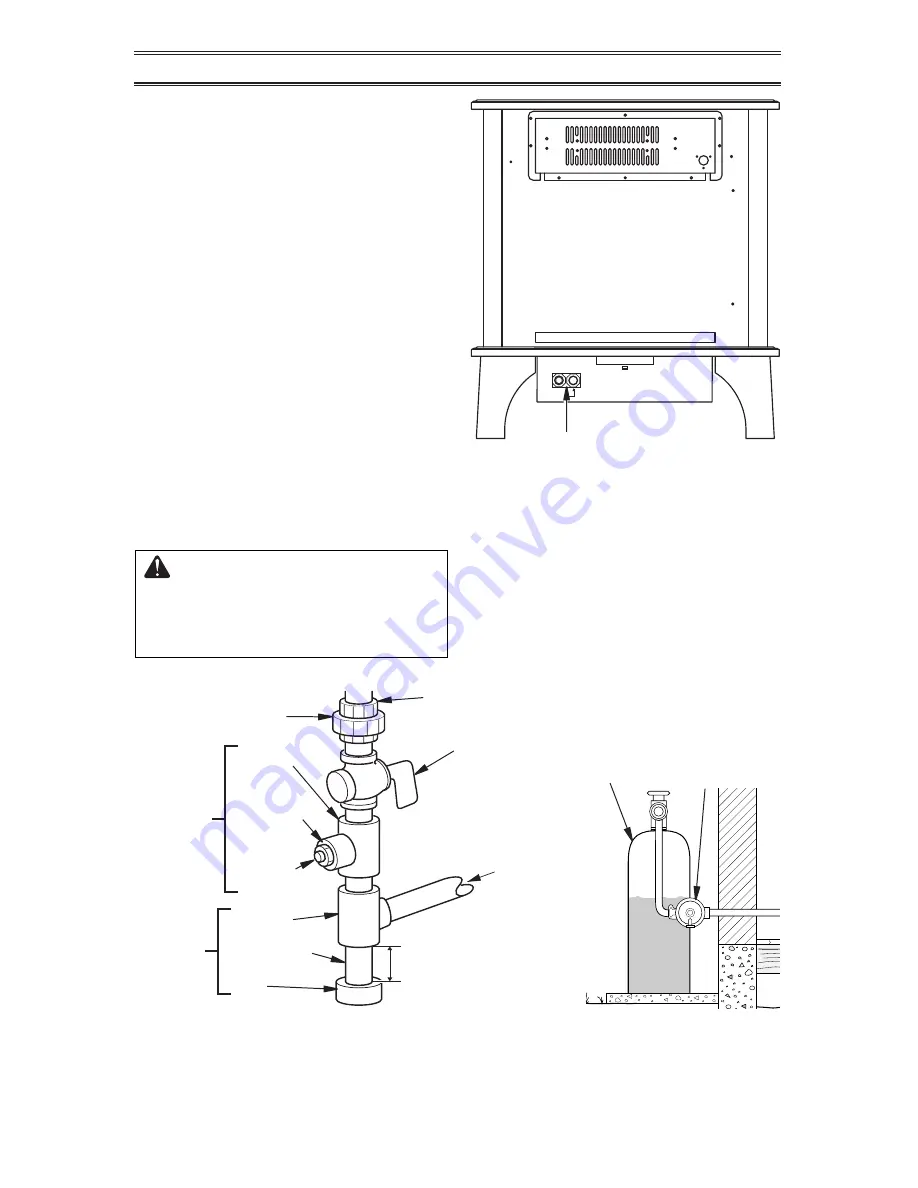
www.usaprocom.com
200125-01A
12
NG
Gas Inlet
Gas esté
INLET GAS PRESSURE
MAX 1/2 PSIG (3.5KPa)
LP
INSTALLATION
Figure 8 - Gas Connection
Figure 7 - Gas Regulator Location and
Gas Line Access Into Stove Cabinet
* Purchase the optional CSA design-certified equipment
shutoff valve from your dealer.
Apply pipe joint sealant lightly to male threads.
This will prevent excess sealant from going
into pipe. Excess sealant in pipe could result
in clogged heater valves.
For propane/LP installations, the installer must
supply an external regulator. The external
regulator will reduce incoming gas pressure.
You must reduce incoming gas pressure to
between 11" and 14" of w.c. If you do not re-
duce incoming gas pressure, heater regulator
damage could occur. Install external regulator
with the vent pointing down as shown in Fig-
ure 9. Pointing the vent down protects it from
freezing rain or sleet.
For both gas types, install sediment trap in
supply line as shown in Figure 8. Place sedi-
ment trap where it is within reach for cleaning.
Place sediment trap where trapped matter is
not likely to freeze. A sediment trap traps mois-
ture and contaminants. This keeps them from
going into heater controls. If sediment trap is
not installed or is installed wrong, heater may
not run properly.
WARNING: Test all gas piping
and connections for leaks after
installing or servicing. Correct
all leaks at once (see page 13).
Figure 9 - External Regulator
with Vent Pointing Down
External
Regulator with
Vent Pointing
Down
Gas Inlet Regulator
Connection
Propane/LP
Supply Tank
Equipment
Shutoff Valve
Ground
Joint Union
3/8" NPT
Pipe Nipple
Tee Joint
Reducer
Bushing to
1/8" NPT
1/8" NPT
Plug Tap
Test Gauge
Connection*
Sediment
Trap
Tee Joint
Pipe Nipple
Gap
3" Minimum
Natural Gas
From Gas Meter
(5" W.C.** to 9"
W.C. Pressure)
Propane/LP
From External
Regulator
(11" W.C.**
to 14" W.C.
Pressure)

















